There are around 100’s of Kalanchoe varieties growing in the wilds of Africa and in some other parts of the world. Out of this, Kalanchoe tomentosa usually grows commonly in Madagascar and they are native plants in Madagascar.
Their leaves usually tend to take a velvety appearance and they would further consist with hairs as well. Tomentosa literally means densely wooly or velvety in general.
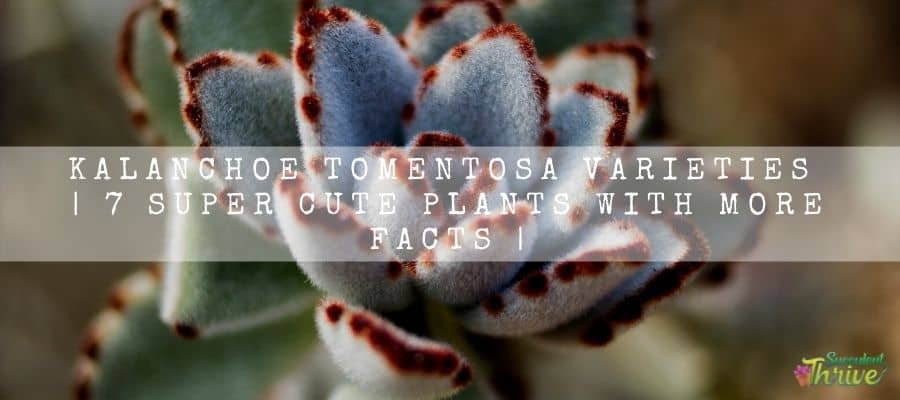
7 most common Kalanchoe tomentosa varieties
Panda plant
This is the most common and popular Kalanchoe tomentosa variant in the world.
The plant have soft velvety silver-green leaves and in mature plants these leaves edge with chocolate milk color dotted margin.
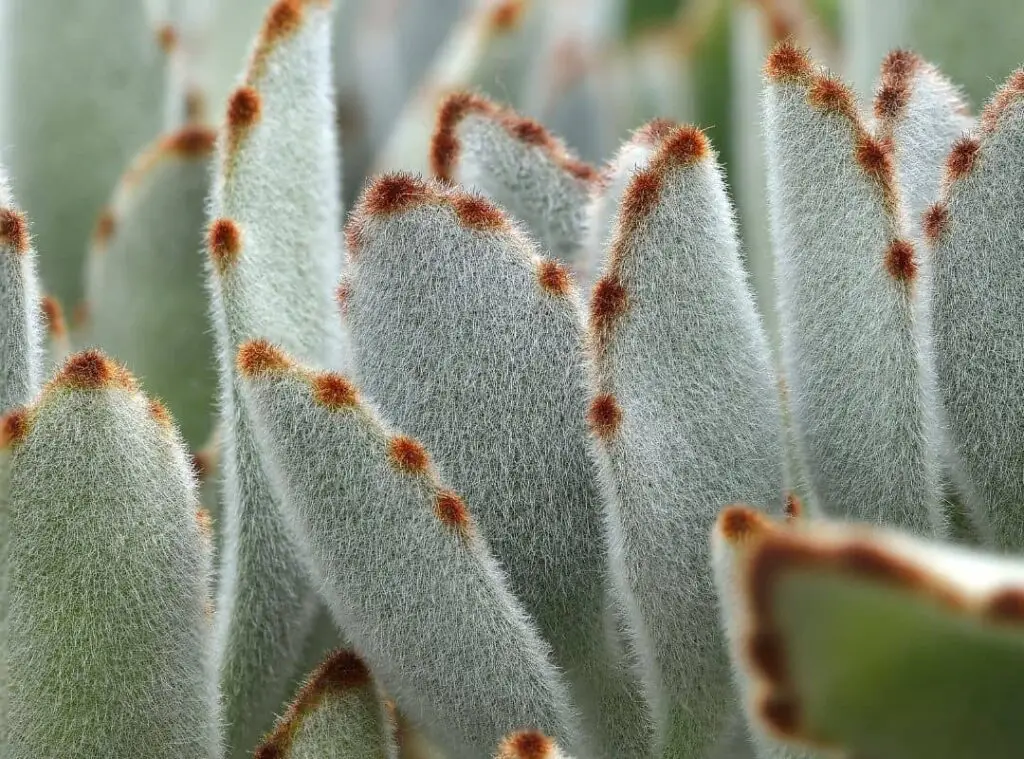
Chocolate Soldier
Chocolate soldier plants would be about 2-3 feet in height. Chocolate soldier leaves would be blue green in color.
Just as the rest of other panda plants, their leaves would also consist with tiny hairs and those would give a fuzzy appearance for the plant.
The leaves edges would further have a red or brown color which will pop out as they grow older.
Many people tend to grow this plant due to their unique foliage and not for their flowers. However, when they flower, they usually bloom in the summer season.
Chocolate soldier flower stalks would be 12 inches in height. Those flowers are small, and you could spot them in green, yellow. Having said that, their flowering is very rare, especially when you are growing them indoors.
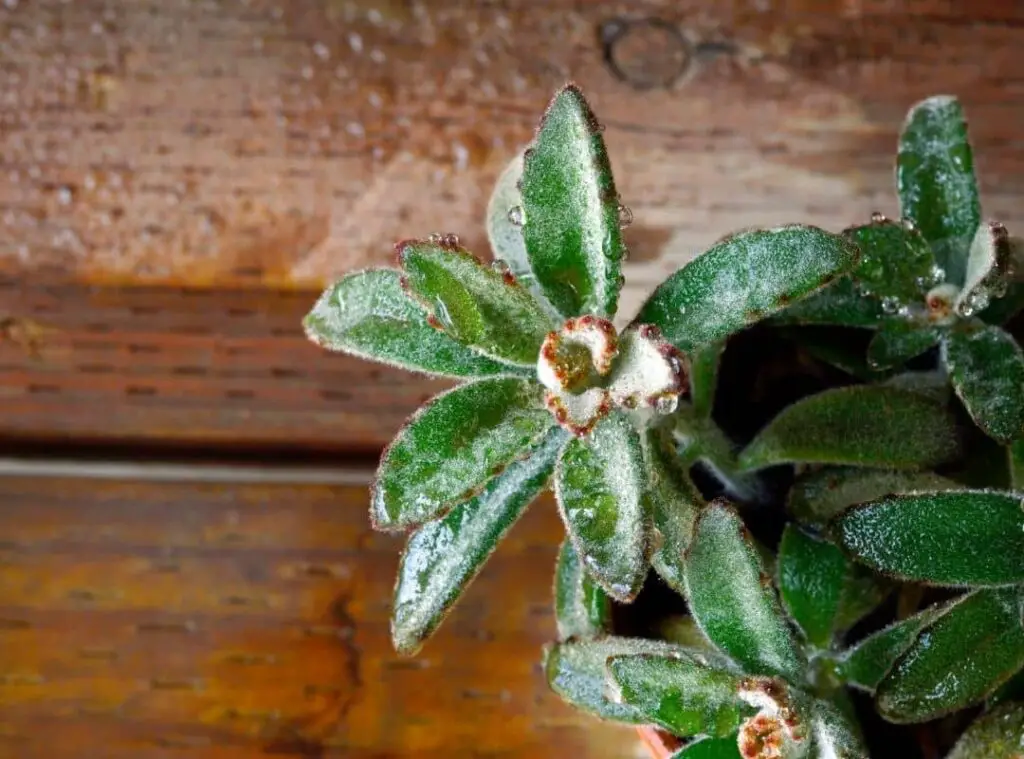
Golden girl
Golden girl is more like a combination between Kalanchoe tomentosa and chocolate tomentosa. These are slow growing succulents along with fine white hairs.
They would further cover the leaves with a golden color too. They could be several feet in height when they grow in the wild.
On the other hand, they would tend to stay as compact plants when you grow them as houseplants.
You need to provide full sunlight along with partial shade for them to grow well. They would perfectly fit in for pots and for rockeries.
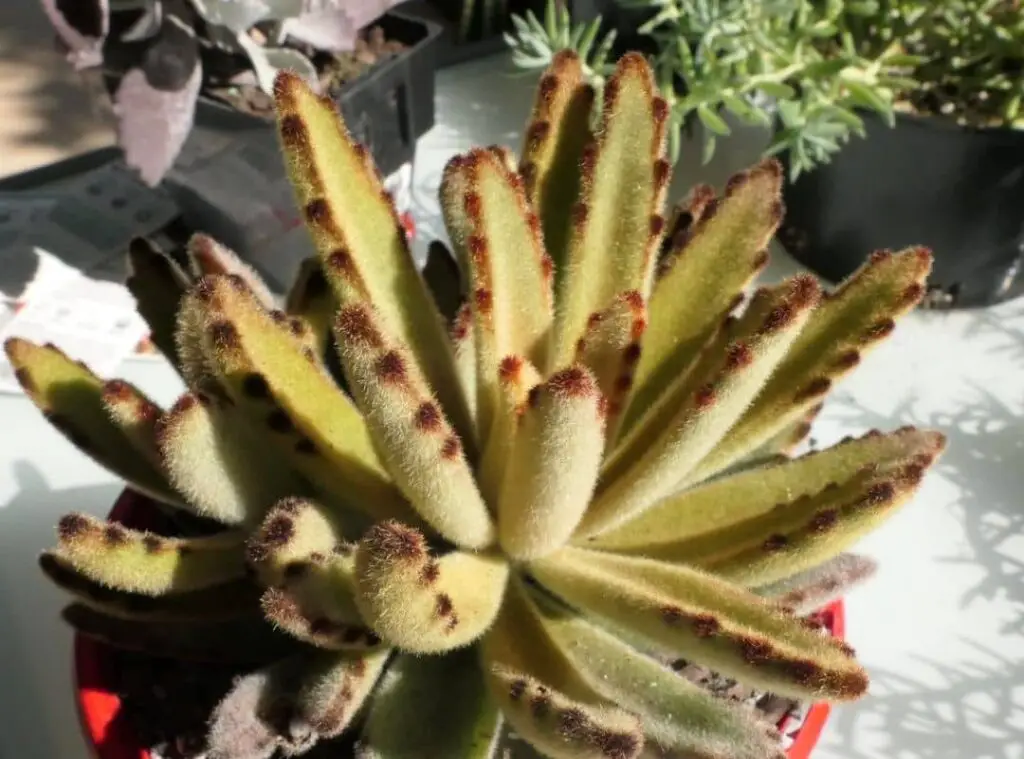
ling ling
Ling ling plants would be about 12 – 36 inches in height. On the other hand, their width would be about 8-24 inches.
Foliage color would be green while the foliage shade would be blue green. They also grow in an upright way.
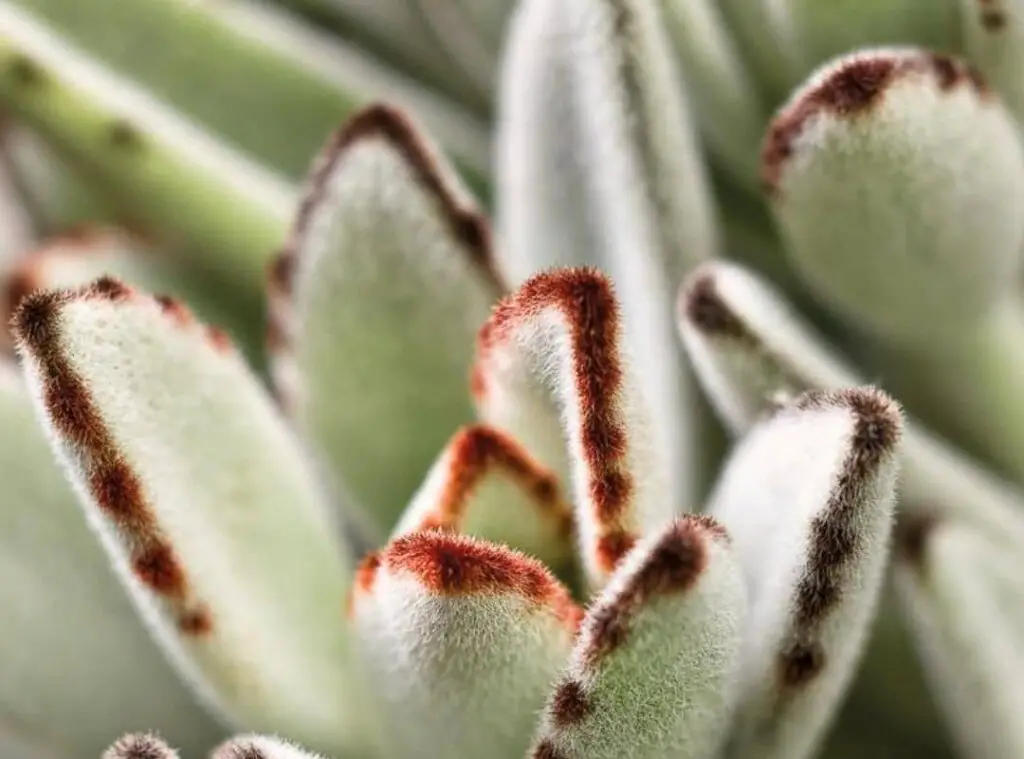
Nigra
Kalanchoe Nigra are a set of slow growing plants. They are perennial succulents which usually tend to grow on a dainty shrub type.
Nigra plant stems would be sturdy, and you may spot they have branches at the base of the plant. They also have densely grown hairs on the plant.
Nigra leaves are slender and long. They could further consist of brown edges along with tips in black.
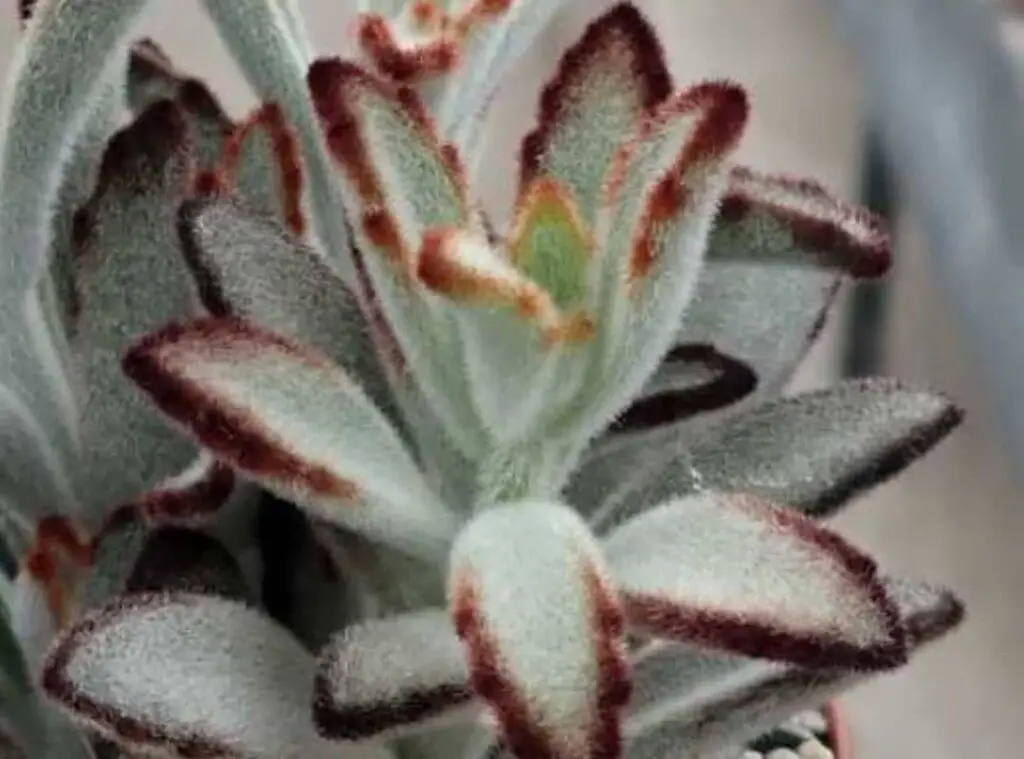
Black tie
It is a rare Kalanchoe tomentosa variety. The leaves are broad in the middle and spear-shaped. The blue gray leaf, margined with black color line.
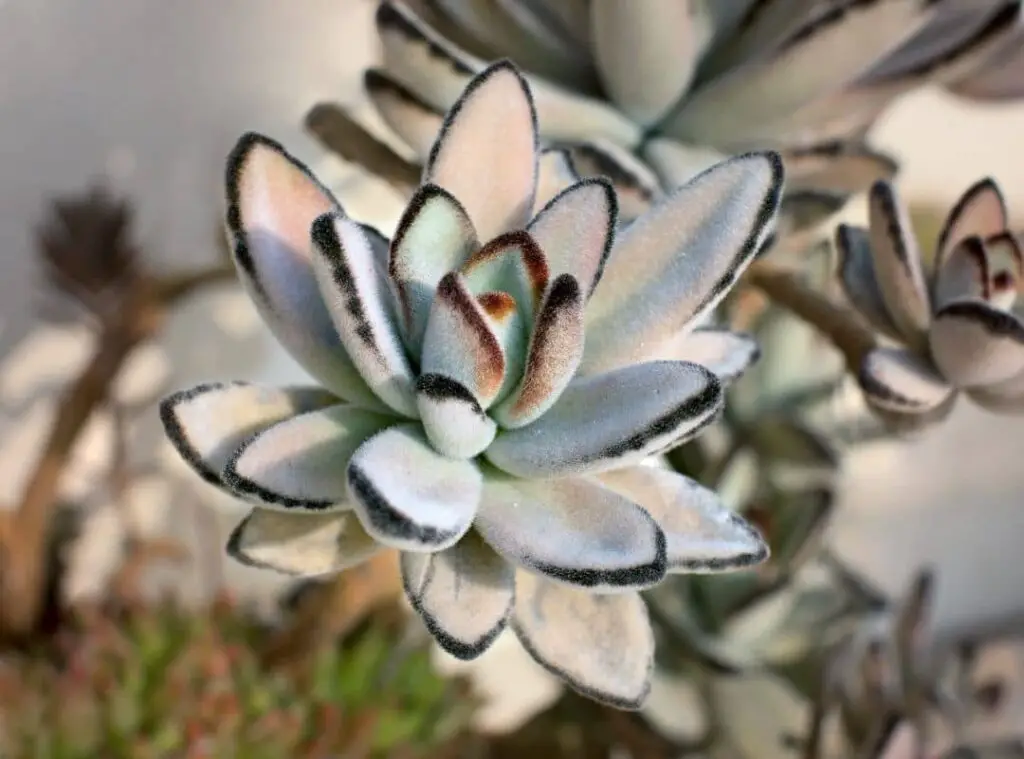
Teddy bear
This is another rare Kalanchoe tomentosa variety. The leaves of teddy bear plants are round and chubby. That’s how they got their adorable name.
Mature leaves of the plant are olive green, light brown or light grey in color. This plant is considered a variant of Kalanchoe tomentosa chocolate soldier.
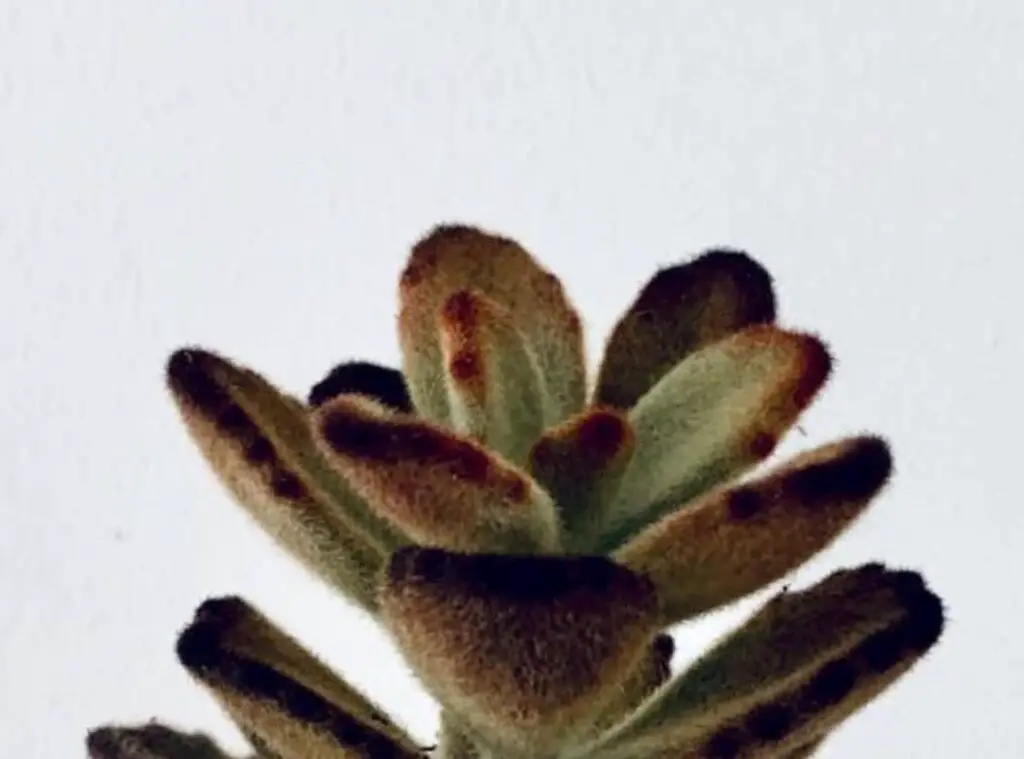
Cinnamon
This is Another variant of Kalanchoe tomentosa chocolate soldier. Young leaves show a distinctive copper margin. When the plant matures the copper color turns into red.
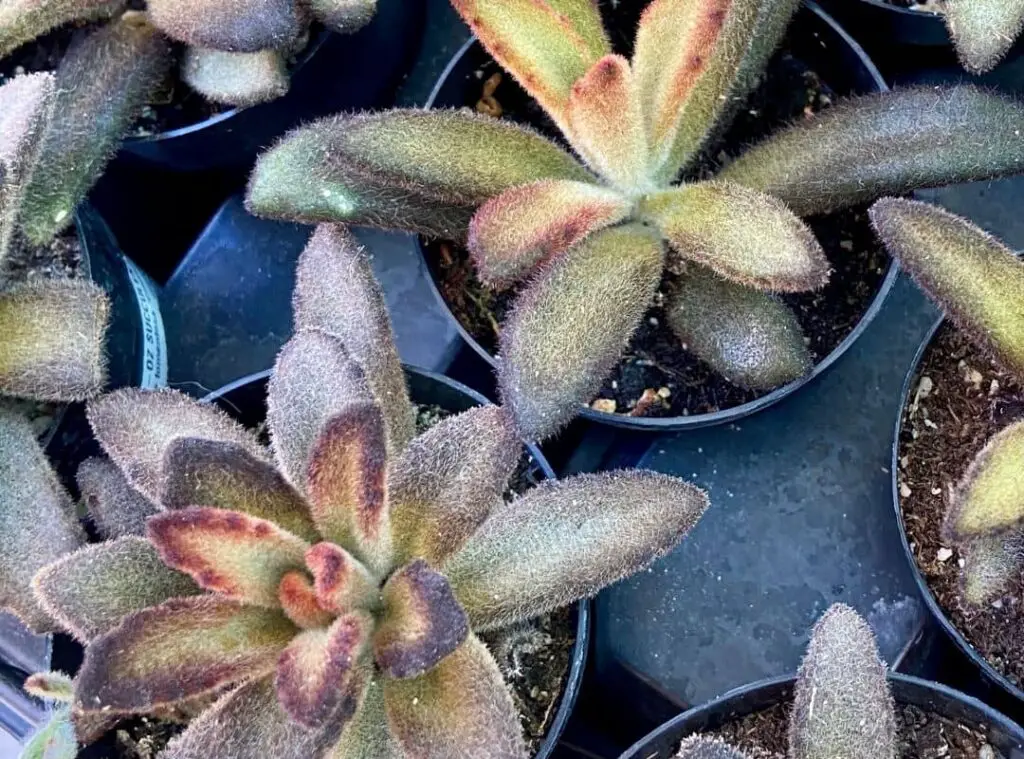
How to care kalanchoe tomentosa varieties
Choosing a pot
First, you need to select the best pot type when you are growing them indoors. Ideally it has to be a large pot in which the plant’s root ball could fit in nicely.
Ideally it has to be an inch space. When they have such space, it would allow the plant roots to spread out well and grow vigorously.
Further, it is important that the pot has sufficient draining holes in the base so that the excess water could move through. Unless, it has to have an overflow tray.
Where to place
When you consider a place to locate them, they would be quite handy to grow in hanging baskets. Unless you could use them for conservatories as well.
It would be great if you could use them for conservatories as they would prefer bright sunlight and some partial sunlight.
Alternatively, you could consider growing them near windows and on shelves as well. That will allow us to get an adequate level of sunlight.
Suitable soil
It is important that you provide the right soil mix for these plants to grow well. To do that, you could make your own soil mix by using the following.
It should ideally have potting soil of 60 %, perlite of 15 % and coarse sand of 25 %. What is important here is having a porous soil mix which has a good air circulation.
It should be a well-draining soil mix as well. If you wish to fasten the draining of the soil mix, you could consider adding big grains to the pot base as the draining of the pot would be benefitted from that.
Watering methods
Usually, you do not have to water the kalanchoe plants a lot. What is more crucial is to keep the soil condition dry.
When you water, make sure that you give them a thorough watering. Once you complete watering, you need to give it some time, so that the soil could get dry.
When it is entirely dry in condition, best is to sprinkle the soil and make sure that there is not excess water under the bottom plate.
They have already conserved water in the foliage. As such if you forget to water them once or twice it would not make a great impact for the plant.
Light and temperature
When it comes to light and temperature, it is important that you provide adequate sunlight for them to grow simply because they grow in desert conditions naturally.
Having said that, the exposure of direct sunlight in the summer season for a prolonged period could result in so many problems.
In winter and in autumn you could consider placing them somewhere where they get direct sunlight.
When it comes to providing sunlight for them during summer, it has to be ideally a place where they are exposed to indirect sunlight.
You may shift the plant to somewhere where they get bright sunlight if you wish to make the leaves frizzy and velvety. The intensity of the sunlight is what causes the leaf color of these plants.
When it comes to temperature, do not expose them to high temperature levels as that could badly impact the plant.
On the other hand, you need to avoid exposing them to colder temperatures as well. These plants are quite responsive towards the colder temperatures.
The best temperature which would suit these plants, would be 15-23 degrees Celsius. In terms of humidity, the best is to have a low level of humidity.
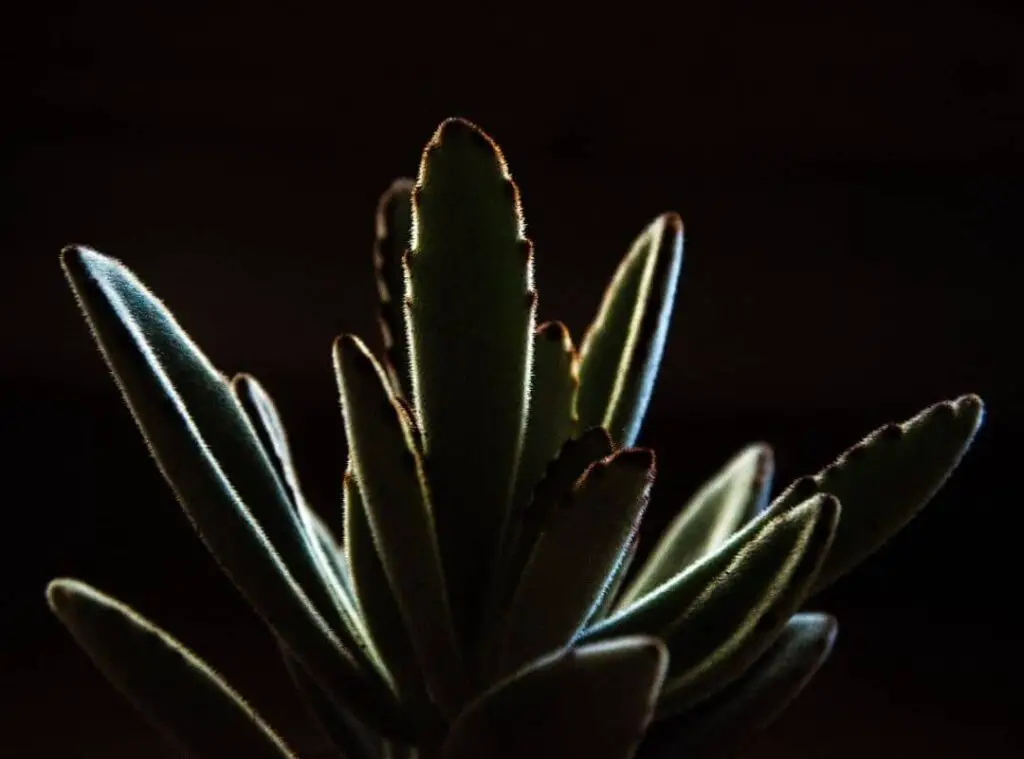
Diseases
Falling of leaves – it would be quite disappointing to spot your plant to drop its leaves. This mainly happens due to faults you make with watering, and it could be most probably due to over watering.
When you provide excess water, it would result in swelling of the leaves and ultimately for the leaves drop.
Pale color – you could spot your panda plants turning pale in color when they run short of adequate sunlight. Ultimate result of this plant would be a green or yellow colored plant.
To treat this, you could relocate these plants from shady places to bright sunny spots where they get more direct sunlight.
Apart from lack of sunlight, over watering could also affect the pale color of the plant. You need to immediately cut down on watering to treat this condition.
Spots on the leaves – A condition called Oedema is what causes the spots on the leaves. Once again over watering could result in this condition.
If you have grown the panda plants outdoors and if you have exposed them to intense sunlight conditions, that also leads to sunburns in the plant.
Unfortunately, once the plant gets sunburned, it is very unlikely that you could get rid of those marks permanently. As such, it is always best to prevent it rather than letting it happen.
Apart from the above, you will have to attend to infections caused by bugs such as mealybugs, spider mites and scales insects as well.
Fertilizing
When it comes to feeding the plant, best is to feed them with a diluted fertilize once a month during spring and in summer seasons.
Refrain in fertilizing them when they go dormant and avoid over feeding as well.
Repotting
When it comes to repotting, you need to consider repotting them once every two years. These are slow growing plants and that is why you need to repot them once every two years.
When you repot, you need to provide a slightly bigger pot than what you gave them before.
Conclusion
Panda plants are attractive plants which are unique in their own way. They would greatly fit in for succulent arrangements or for your requirement in indoor gardening.
They would grace the place wherever you locate them.
Read Next: Do Kalanchoe Flower? 6 Different Type Of Flowers With More Information
